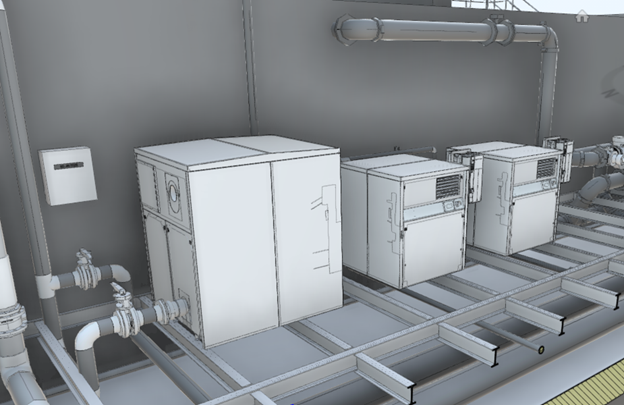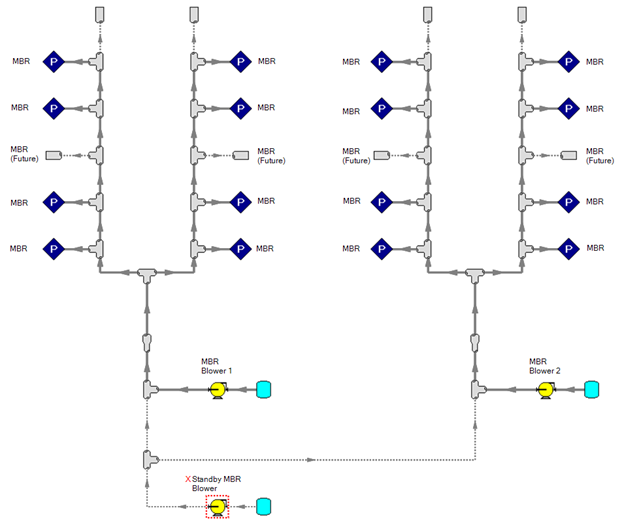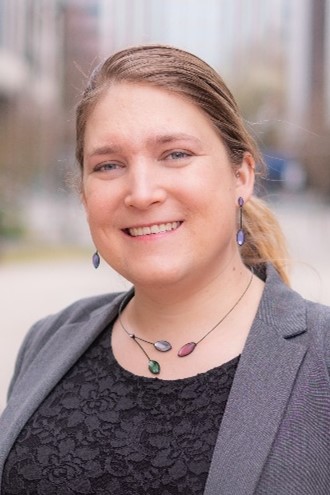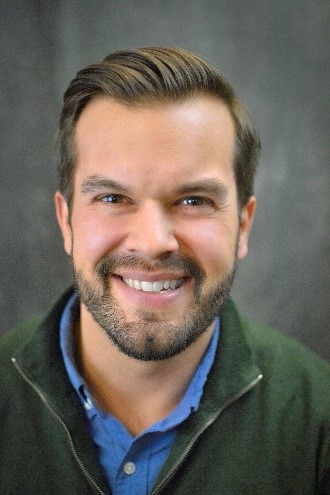By Matt Steiner & Jen Murphy
Part 1: AFT Arrow
Many utility ratepayers are currently struggling with economic security. At the same time, energy costs are rising and the impact of uncertain material and equipment markets is driving project costs up and making capital planning less predictable. As such, it is important that as engineers that we leverage all available tools to optimize each project’s capital and operational costs. Almost just as important is sharing what we learn with not only our colleagues, but the wider engineering community.
The Aeration systems at Resource Recovery Facilities (Wastewater Treatment Plants) account for 30 to 80 percent of a plant’s energy usage, making them typically the single largest source of energy use within the facility. They’re also the most complex and capital intensive systems within a plant. This integral system, which is needed to meet permit and protect our local environment, presents many opportunities for optimization.
In the past, these systems were designed using slide rules and empirically derived duct equations, a standard for the time. Lacking more precise tools meant approximations were common and increased factors of safety were needed. This often resulted in decreased performance, more expensive equipment, and higher long-term energy costs. However, this was preferred to having too little air, incomplete treatment, and permit violations.
Having been at this for over 40 years, the engineers and aeration specialists at Parametrix have several design, troubleshooting, and optimizations tools available. These include software such as AFT Arrow, Revit, and Flow3D (CFD) which allow us to optimize more complex designs while still meeting client-specific system and budgetary needs. As an example, Parametrix process programmers recently helped one client save $100,000 per year in energy after equipment and control improvements at their approximately 10 million gallons per day plant.
Over the next few weeks, we will share some of our recent experience with tools and configurations that are helping us deliver some of the most optimized designs in the industry. In this first post of a three-part series on aeration system design and optimization, we are highlighting AFT Arrow and our use on a recent treatment plant upgrade project at the Sunriver Resort.
What is AFT Arrow?
AFT Arrow (Arrow) is a software modeling tool made by Applied Fluid Technologies (AFT), that uses drag and drop features to quickly model and compare multiple configurations of air distribution systems. An Arrow model can be used for evaluation of any compressible fluid and while this is often aeration systems, it can also be used to model biogas treatment systems and natural gas distribution systems. This software easily takes into effect variable speed compressors, reaction cell losses, blower surge, different control schemes, and duct/piping temperatures, in addition to several other variables and considerations.
What are the advantages of the Arrow model?
Parametrix uses Arrow for aeration system troubleshooting and design for several reasons:
– Complexity. Air is compressible. Compressible fluid calculations can become complex because of adjustments needed due temperature and pressure changes that are significantly less of an issue with incompressible fluids such as water.
– Time. Using Arrow saves time because the graphical interface and pre-built blocks are easier to setup and check than spreadsheet calculations. This allows the project team to spend less time setting up scenarios and more time optimizing the design.
– Accuracy. The Arrow model ensures greater confidence in the calculations. Arrow has gone through an extensive verification and validation process, by AFT, the industry, and Parametrix and review of the Arrow model is significantly easier and quicker than a spreadsheet.
– Flexibility. Additional scenarios can easily be created and evaluated to help with any alternative analyses. For this project the model was used for duct sizing and to ensure that the standby blowers could continue to be used after future plant expansions ensuring confidence in this investment.

Using AFT Arrow at the Sunriver Wastewater Treatment Plant
In 2019, Parametrix began working with Sunriver Environmental, LLC on a wastewater treatment plant upgrade in Sunriver, Oregon. The facility currently treats 1 million gallons of wastewater per day via conventional activated sludge treatment. This project is being delivered through construction manager/general contractor (CM/GC) contracting and will provide two new membrane bioreactor (MBR) treatment trains and a new headworks. Existing process tanks will convert to waste activated sludge storage. When complete, it will treat up to 1.5 million gallons per day and produce Class A recycled water.
Arrow was used to model two separate aeration systems for this project. The larger of these is the aeration air system, which will be comprised of three blowers and several pre-aeration and membrane distribution zones. This system will provide air to scour the membranes inhibiting fouling and increasing membrane efficiency. It also raises the dissolved oxygen within the process, allowing treatment microbes to breakdown organics. In addition to the aeration system, a mixing air system is will also be provided to keep solids suspended in the new sludge storage basins.
The design process has been highly collaborative and as both the contractor and preselected membrane manufacture have provided input, new system configurations and iterations have been quickly and accurately modeled. This has allowed for time and cost-effective evaluations of alternatives under several operating scenarios. This has allowed the team to quickly determine the performance impact of proposed value engineering and update the model throughout design development. Additionally, the project aeration specialist was able to optimize the membrane manufacturer’s originally proposed system configuration, reducing several portions of aeration duct and resulting in capital cost savings without impacting operational efficiency. Lastly, the team was also able to evaluate several alternatives early on that allowed repurposing of two existing aeration blowers and one new blower to provide mixing air for the new sludge storage lagoons.

While AFT Arrow was able to be effectively used on this project to optimize the aeration piping design, it was only one tool within the Parametrix toolkit that was used for design optimization. Others included utilizing the existing 3D BIM model to allow for the time efficient use of computational fluid dynamics (Flow3D) to optimize mixer sizing and placement in addition to influent, return activated sludge, and feed forward pipe locations within the new anoxic basins.
In the next post, we will look at how the Parametrix team is using AFT Arrow, in house custom hydraulic models, and 3D design to upgrade both aeration and biogas systems while also reusing and repurposing existing sections of pipe at a larger Pacific NW treatment plant.
About the Authors

Jen is passionate about the wastewater industry and helping clients tackle engineering challenges to allow them to do more with less. She has a diverse skillset as a project manager, mechanical engineer, control systems designer, and crew foreman focused on wastewater infrastructure. These skills facilitate cross-discipline communication, creating cohesive and constructible final products. She has served as a major contributor on over 30 new or rehabilitated pump stations, several pipeline rehabilitation projects, and the installation of gravity collection systems for new housing developments. Jen successfully uses emerging technologies—3D modeling in Revit, VR/AR, and CFD modeling—to illustrate the value of various design solutions.

Matt brings a holistic perspective to each of his projects, knowing that decisions made now can have significant impact on operations or future possibilities. He has been involved in wastewater projects from the master planning phase through alternatives evaluations, design, construction, and startup. Matt has served as an engineering lead, design manager, or deputy project manager for pump stations, BNR, MBR, SBR, biotrickling filters, biogas utilization, and collection system modeling projects. As a process engineer, he has experience with manganese dioxide filtration for groundwater, aquifer storage and recovery, slow sand filtration, biotrickling filters and carbon contact units for odor control, on-site sodium hypochlorite generation, chemical feed systems, biogas utilization, and numerous pilot studies. Clients find him very approachable and friendly, enabling him to work closely with stakeholders to develop smart solutions.

